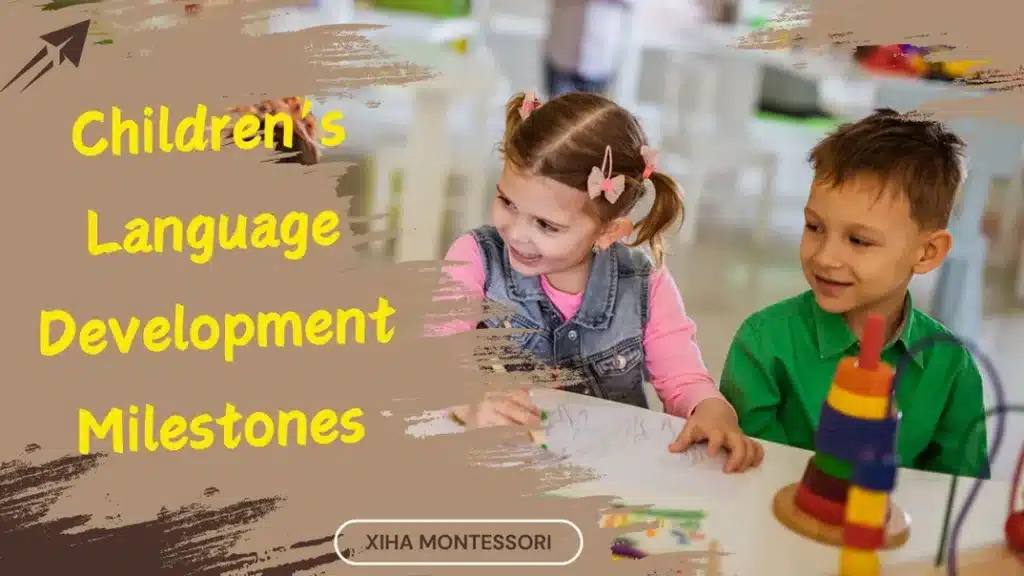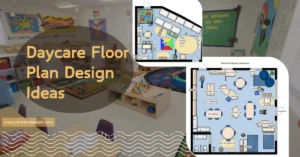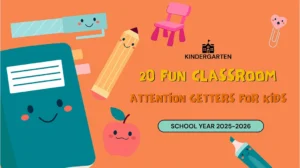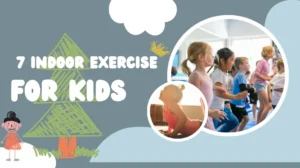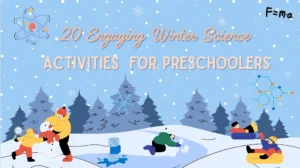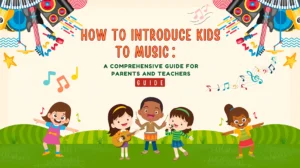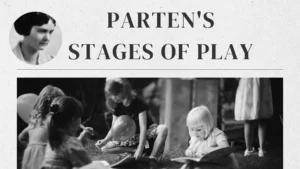Children’s language development follows a series of predictable milestones. Many parents and educators have difficulty understanding children’s language development stages. Understanding these milestones can ease concerns and provide guidance to support language acquisition.
Understanding children’s language development milestones, from preverbal speech to complex sentences, is critical at every stage. Providing an environment filled with communication and learning ensures that children reach their full potential in language development.
From their first cooing and clucking sounds to their first words and conversations, a child’s language skills develop rapidly in the first years of life. By understanding these milestones, you can better support their language development and identify potential areas of concern.
By the end of this article, you will have a comprehensive understanding of children’s typical language milestones, enabling you to nurture and support their language skills as they grow.
What is Language Development?
Language development refers to how children understand and communicate language during early childhood. It’s an essential aspect of development, encompassing the ability to understand what others say (receptive language) and to express oneself through words (expressive language).
This complex process begins in infancy and continues through childhood, involving various skills and milestones.
Expressive Language
Expressive language involves the ability to convey thoughts, feelings, and ideas. This includes speaking, writing, and non-verbal communication, such as gestures and facial expressions. Children develop expressive language skills as they grow, starting with babbling and progressing to forming sentences.
Receptive Language
Receptive language refers to understanding and processing the language we hear and read. This includes understanding spoken words, comprehending sentences, and following instructions. Receptive language skills develop as children are exposed to language in their environment.

What Are Language Development Milestones?
Language development milestones are specific markers that indicate typical language growth at various ages. These milestones help parents and educators track children’s language development and identify potential delays early on.
Why is Language Development Important?
Language development is fundamental for a child’s overall growth and has numerous benefits that impact various aspects of their lives.
1. Promotes Social Interaction
Language allows children to interact with others, form relationships, and engage in social activities. They learn to share their thoughts, understand others, and participate in conversations through language. This social interaction is crucial for developing empathy, cooperation, and other social skills.
2. Promotes Cognitive Development
Language is closely linked to cognitive development. As children acquire language, they also develop their thinking, problem-solving, and reasoning skills. Understanding and using language helps children process information, categorize objects, and understand complex concepts.
3. Helps with Self-Expression
Language gives children the tools to express their thoughts, feelings, and needs. This self-expression is vital for their emotional development and helps them communicate effectively with parents, teachers, and peers.
4. Improves Self-Esteem
As children become proficient in language, they gain confidence in their communication ability. This improved self-esteem encourages them to participate more actively in social and academic settings, fostering a positive self-image.
5. Physical Development
Language development is also connected to physical development. Speaking involves fine motor skills, such as controlling the lips, tongue, and vocal cords. Additionally, engaging in activities promoting language, such as playing and interacting with others, supports overall physical coordination and development.
6. Improves Literacy
Language skills are the foundation of literacy. Early language development sets the stage for reading and writing abilities. Children who develop strong language skills are better prepared to learn to read and write, which is crucial for academic success.
7. Emotional Development
Language allows children to express their emotions and understand the feelings of others. Communicating about emotions is vital for emotional regulation and mental health. It also helps develop empathy and maintain healthy relationships.

Language Development Stages
By recognizing and nurturing each language development stage, parents, educators, and caregivers can help children develop strong communication skills that will benefit them throughout their lives.
- Pre-linguistic Language Development: This initial stage involves infants using cries, facial expressions, and gestures to communicate their needs and reactions.
- Babbling Stage: Around 6 months old, infants begin to babble. This stage is characterized by the repetition of sounds like “ba-ba” or “da-da,” and while these don’t yet carry meaning, they are important for the development of later speech.
- One-Word Stage: Around the first birthday, most children start to use single words like “mama” or “dog” to refer to objects, desires, or people. These words often carry a broader meaning than the words used by adults.
- Two-Word Stage: By age two, children often start combining two words, like saying “more milk” or “big dog.” This shows that they are starting to grasp the syntactic rules of language.
- Telegraphic Speech: As children develop, their sentences become more complex. However, they might still sound telegraphic (omitting less critical parts of sentences) as they focus primarily on nouns and verbs.
- Further Development: From age three onwards, children’s language skills rapidly expand in vocabulary and grammatical complexity. They start using more complex sentences, including different tenses and prepositions, and their understanding of language rules deepens.
How to Promote Early Language Development in Children?
Enhancing language development requires consistent effort and creativity.
Read Aloud Every Day
Reading to your child daily exposes them to new words and sentence structures. Choose a variety of books, including picture books, storybooks, and non-fiction.
Talk to Your Child Regularly
Engaging in frequent conversations with your child helps build their vocabulary and understanding of language. Describe your actions, ask questions, and encourage them to express themselves.
Sing Songs and Rhymes
Songs and rhymes help children learn about rhythm, patterns, and sounds in language. Singing together can also be a fun bonding activity.
Encourage Storytelling
Encourage your child to tell their own stories, whether real or imaginary. This helps them practice organizing their thoughts and using language expressively.
Limit Screen Time
Excessive screen time can hinder language development. Instead, prioritize interactive activities that involve face-to-face communication.
Be Patient and Listen
Give your child time to express themselves and listen attentively. Avoid interrupting or finishing their sentences.
Be Responsive
Respond promptly and positively to your child’s attempts to communicate. This encourages them to keep trying and improves their confidence.
Language Development Milestones
1. 0-3 Months
During the first three months, infants primarily communicate through crying, cooing, and making eye contact. These early forms of communication are essential as they lay the foundation for later language skills.
Key Milestones:
- Crying: Infants cry to express needs such as hunger, discomfort, or fatigue.
- Cooing: Around six to eight weeks, babies start cooing, producing soft vowel sounds like “oo” and “ah.”
- Eye Contact and Smiling: Babies begin to make eye contact and smile, showing early signs of social engagement.
Tips for Encouragement:
- Respond promptly to your baby’s cries to build trust and security.
- Engage in gentle “baby talk” with exaggerated facial expressions to capture their attention.
- Encourage cooing by mimicking their sounds and engaging in responsive interaction.
2. 3-6 Months
From three to six months, babies start to produce more varied sounds and begin to respond to their environment with increased engagement.
Key Milestones:
- Babbling: Babies begin to babble, combining consonant and vowel sounds like “ba-ba” and “da-da.”
- Laughing and Squealing: They express joy and excitement through laughter and squeals.
- Responding to Voices: Infants turn their heads toward familiar voices and sounds.
Tips for Encouragement:
- Engage in vocal play, using different sounds and intonations to stimulate their auditory senses.
- Play peek-a-boo and other interactive games that involve verbal responses.
- Read picture books with simple, repetitive text to expose them to language patterns.
3. 6-9 Months
Between six and nine months, infants continue to refine their babbling and begin to understand basic words and phrases.
Key Milestones:
- Advanced Babbling: Babbling becomes more complex, with varied syllable combinations.
- Understanding Simple Words: Babies start to recognize and respond to words like “no,” “bye-bye,” and their names.
- Gestures: They use gestures such as pointing and waving to communicate.
Tips for Encouragement:
- Encourage babbling by talking to your baby throughout the day, describing activities and surroundings.
- Use gestures along with words to reinforce their meaning.
- Sing simple songs and nursery rhymes that incorporate hand movements and actions.
4. 9-12 Months
During this stage, babies begin to use their first words and improve their understanding of language.
Key Milestones:
- First Words: Many babies say their first words, such as “mama” and “dada.”
- Understanding Commands: They begin to understand simple commands like “come here” and “give me.”
- Imitating Sounds: Infants imitate the sounds and words they hear from adults.
Tips for Encouragement:
- Encourage first words by labeling objects and people around them.
- Play interactive games that require verbal responses, like naming body parts or favorite toys.
- Celebrate and positively reinforce their attempts to speak, even if they are not perfectly clear.
5. 12-18 Months
This period is marked by rapid vocabulary growth and the beginning of more structured language use.
Key Milestones:
- Increased Vocabulary: Children’s vocabulary expands to include more words for everyday objects, actions, and people.
- Simple Phrases: They start combining two words to form simple phrases like “more milk” or “big truck.”
- Following Simple Instructions: Children can follow simple instructions and understand questions.
Tips for Encouragement:
- Read books with simple stories and colorful pictures to build vocabulary.
- Encourage language use by offering choices (e.g., “Do you want an apple or a banana?”).
- Engage in conversations with your child, encouraging them to express themselves verbally.
6. 18 Months – 2 Years Old
Children begin to form short sentences and use language to express more complex ideas.
Key Milestones:
- Two-Word Phrases: Children frequently use two-word phrases to communicate needs and describe actions, like “want cookie” or “go park.”
- Increased Comprehension: They understand and respond to a wider range of words and phrases.
- Use of Pronouns: The use of basic pronouns like “me,” “you,” and “my” becomes more common.
Tips for Encouragement:
- Model simple sentences in your daily interactions.
- Encourage storytelling by asking your child to describe their day or favorite activities.
- Play games that involve verbal instructions and responses, such as Simon Says.
7. 2-3 Years Old
During this stage, children’s language skills become more refined, and they begin to use more complex sentences.
Key Milestones:
- Longer Sentences: Children start using three- to four-word sentences, such as “I want more juice” or “The dog is big.”
- Grammar Development: They begin to use basic grammar rules, including plurals, past tense, and possessive forms.
- Increased Vocabulary: Vocabulary continues to grow, often reaching hundreds of words.
Tips for Encouragement:
- Engage in conversations about their experiences, feelings, and interests.
- Introduce educational games and activities that promote verbal interaction and critical thinking.
- Support their reading and writing development with books, drawing, and storytelling activities.
8. 3-4 Years Old
Children’s language abilities continue to develop rapidly, enabling them to engage in more complex conversations and storytelling.
Key Milestones:
- Detailed Sentences: Children use more detailed and complex sentences, often including five to six words.
- Storytelling: They begin to tell simple stories and describe past events.
- Understanding Abstract Concepts: Children start to grasp more abstract language concepts, such as time and emotions.
Tips for Encouragement:
- Read stories together and discuss the characters and events.
- Encourage imaginative play that involves dialogue and role-playing.
- Provide opportunities for social interaction with peers to develop conversational skills.
9. 4-5 Years Old
By this stage, children have a well-developed vocabulary and can use language to express complex ideas and engage in detailed conversations.
Key Milestones:
- Complex Sentences: Children construct more complex sentences with multiple clauses.
- Advanced Vocabulary: Vocabulary includes a wide range of words, including adjectives and adverbs.
- Conversational Skills: They can engage in back-and-forth conversations, ask questions, and understand more nuanced language.
Tips for Encouragement:
- Discuss a variety of topics to expose your child to new vocabulary and concepts.
- Encourage creative storytelling and writing activities.
- Introduce games that challenge their language skills, such as word puzzles and memory games.
10. 5-6 Years Old
As children prepare for school, their language skills become more sophisticated, enabling them to understand and use complex language structures.
Key Milestones:
- Fluent Speech: Children speak fluently and can articulate their thoughts clearly.
- Reading and Writing: They begin to read and write more independently, understanding the relationship between spoken and written language.
- Critical Thinking: Language use includes reasoning, predicting, and problem-solving skills.
Tips for Encouragement:
- Foster a love of reading by providing a variety of books and reading together regularly.
- Encourage writing through journaling, drawing, and storytelling.
- Support their language development with activities that promote critical thinking and problem-solving.
Conclusion
Understanding these language development milestones helps parents, educators, and caregivers support children’s linguistic growth effectively. Each stage is crucial for building strong communication skills, and with the right support, children can achieve remarkable progress.

